This quick lesson will serve as an introduction to voice leading in jazz guitar comping. On the way you'll learn some sweet sounding 2 5 1 progressions, too.
Voice Leading
Voice leading is a way of making your comping (accompaniment) sound smooth and melodic. The aim is to create a rhythm guitar part that sounds like a piece of music in its own right, rather than a collection of random chords that have been thrown together.
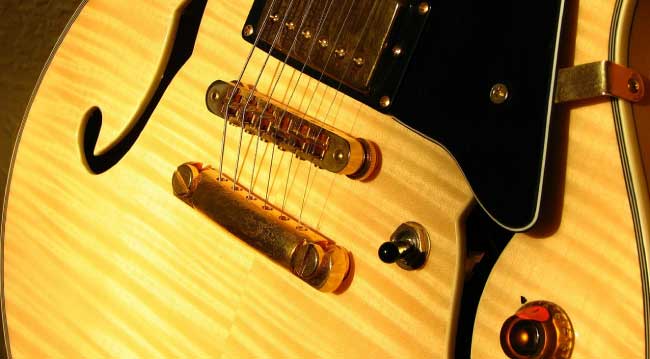
It uses the same principles as classical music polyphonic harmony: just without as many rules!
Basically you're looking to create a stepwise movement between one or more notes in adjacent chords. The notes can be the highest, lowest or any of the inner notes (or voices) in the adjacent chords.
Suppose you are playing a 2 5 1 in G major, and you wanted to use voice leading to create a nice sounding rhythm part.
You could play an Am7 with the A at the 5th fret on the 1st string as its highest note. Then a D11 with the G at the 3rd fret of the 1st string as the highest note. Finally you could play a Gmaj 7 with the F# at the 2nd fret as its highest note.
The highest notes in each chord would have created a stepwise movement down the scale.
Play it for yourself:
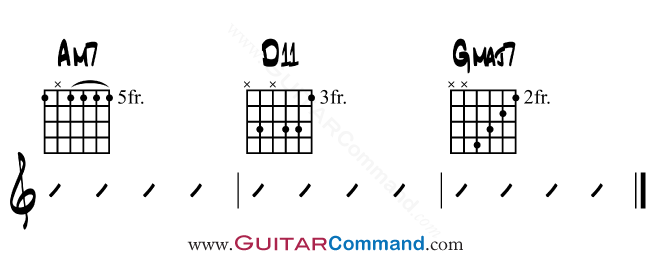
Another way of playing this progression is shown below. Here, the stepwise movement is still in the top part.
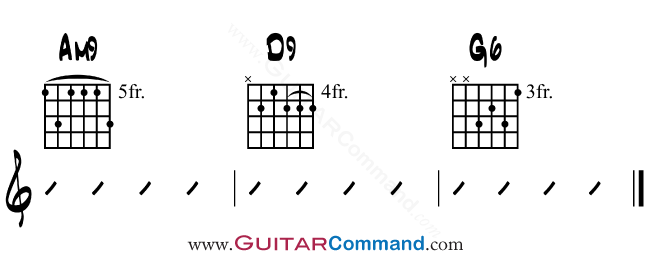
Once You Start Concentrating On The Notes In Your Chords, You Can Take Voice Leading Further
Note that the movement doesn't always have to be stepwise - sometimes larger leaps can sound good.
Hopefully you're getting a little excited now as you see that (especially) using the top notes of chords for voice leading - and therefore using them to play specific lines - you can also construct solo arrangements of songs using these principles. But that's for another time.
Here are some more 2 5 1 progressions that illustrate the basic concept of voice leading. (See this article for information on 2 5 1 progressions.)
Voice Leading Progression 1
Notice that in this example the voice on the 3rd string moves downwards, while the top note moves upwards. This alternate motion sounds particularly pleasing. The last chord prepares for the repeat, with the voice on the 3rd string rising to the C in the Dm7.
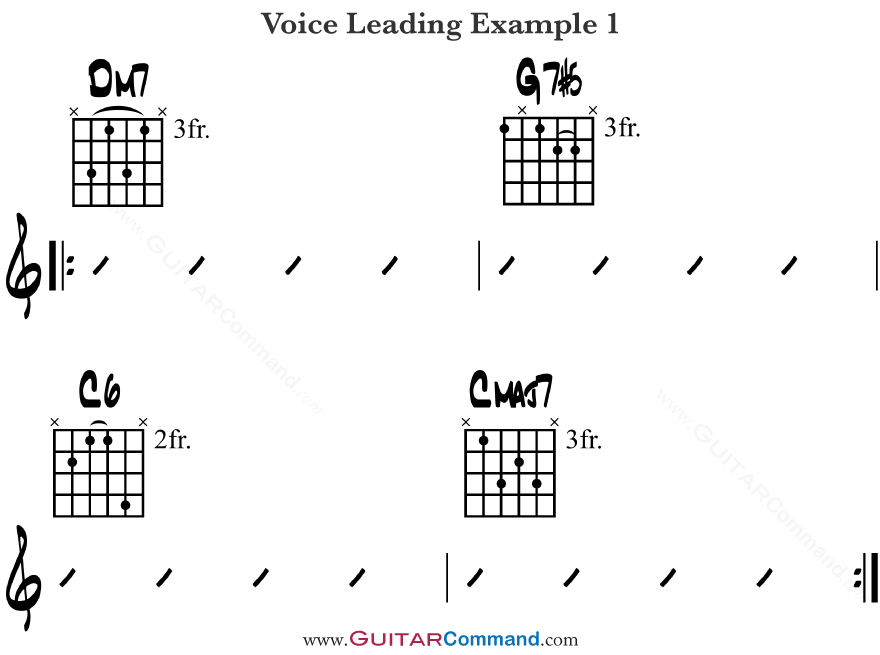
Voice Leading Progression 2
Here the voice on the 3rd string again moves downwards. The highest voice jumps at the end, giving the chords a melodic sound.
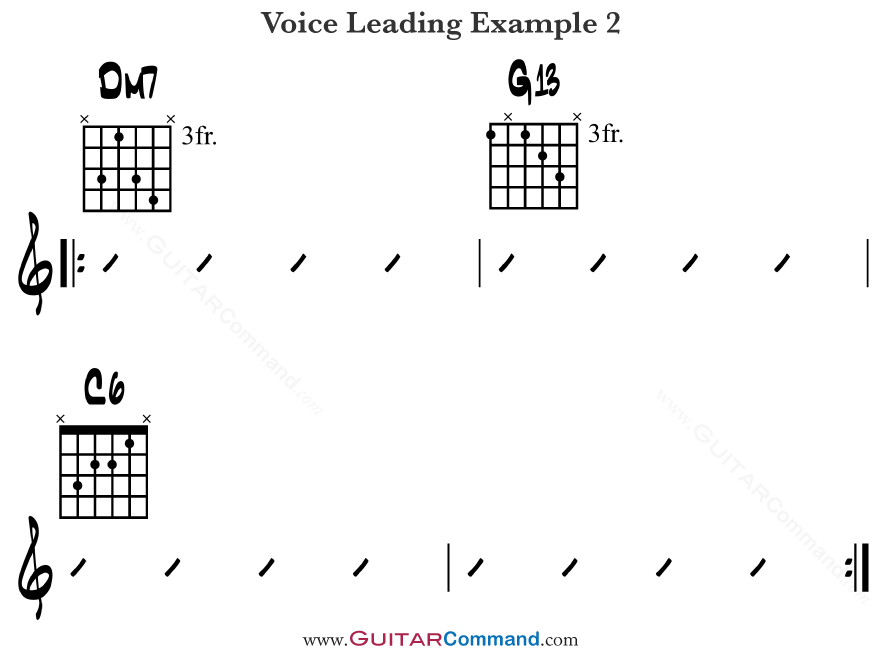
Voice Leading Progression 3
Here the emphasis is on the voice on the 4th string. When it moves, the top string note remains stationary, and vice versa. This creates a nice effect.
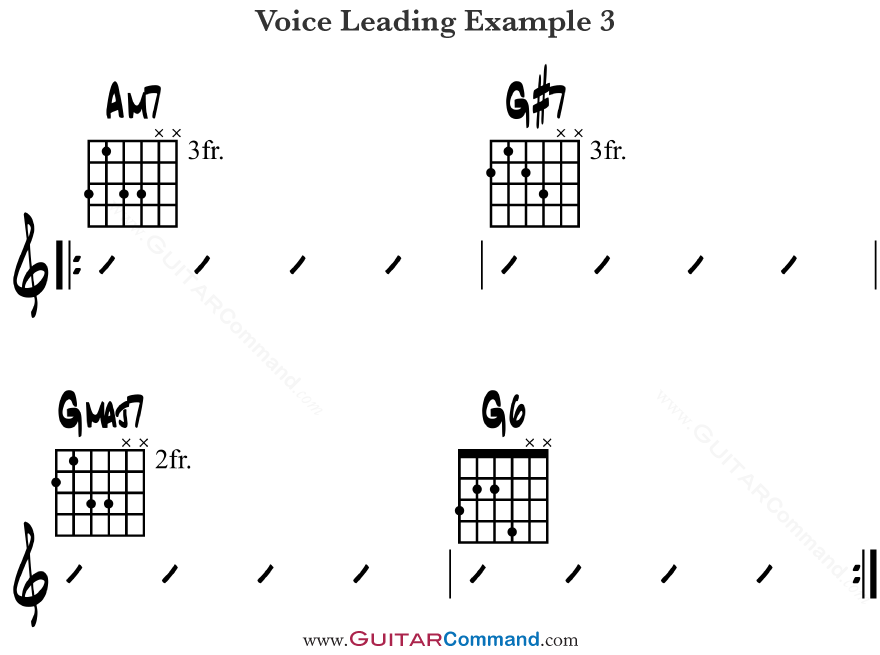
Conclusion
This has been a very brief introduction to voice leading. It's a real craft to be able to create rhythm guitar parts that sound smooth and unforced. Hopefully I've inspired you to take more notice of the notes in your chords, and the lines you can create as you change chords.
Subscribe To Guitar Command
Have free guitar news delivered direct to your inbox. Get our 'Guitar Chords Of The Week', plus lessons, reviews and more: click here to subscribe to Guitar Command. (We never spam, we never pass on any information, and you can unsubscribe instantly, at any time.)
Do you want to learn guitar scales and modes? Check out our backing tracks for learning scales and modes – written specifically for you to learn and use scales and modes in your improvisation.


